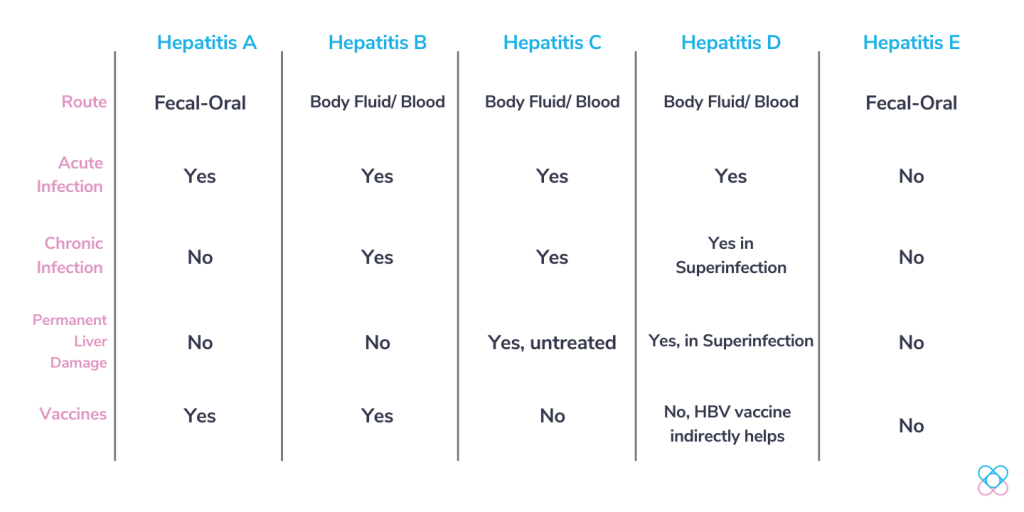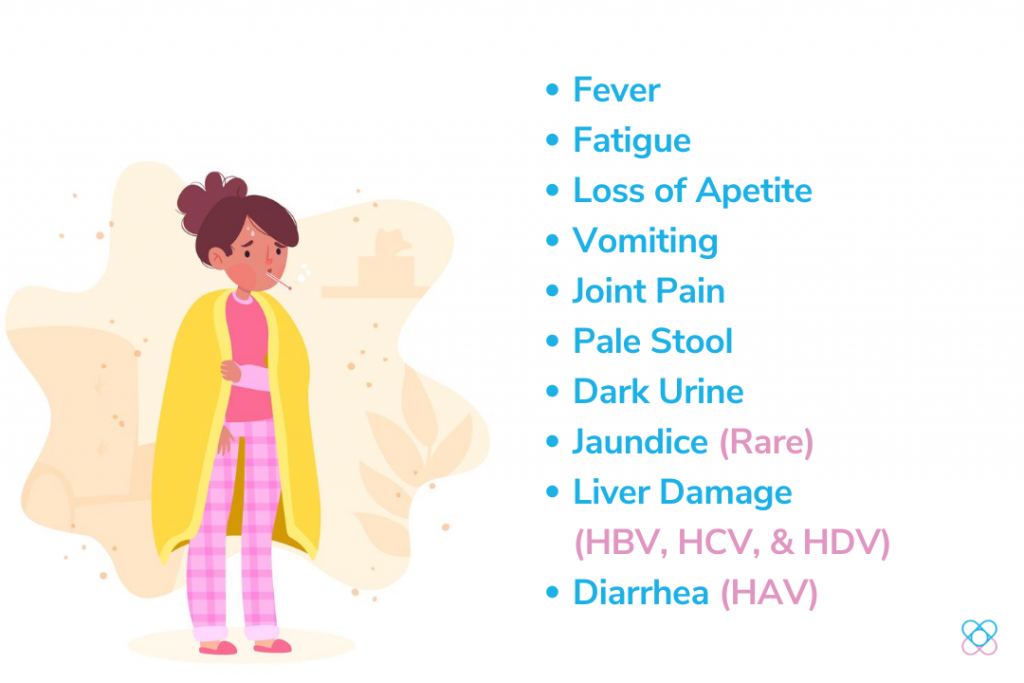
Another day another disease gets the spotlights. At the time of writing, COVID-19 is still rampant around the world. All the focus goes into COVID and people start to forget that there are still various other viruses and diseases looming around. One prevalent disease, or rather a class of diseases, is Hepatitis.
What exactly is it? Often associated with just another word doctors and health professionals throw around, hepatitis is one of the most prevalent diseases worldwide. Hepatitis is the inflammation of the liver caused by either viral infections, autoimmune diseases, and toxic substances abuse. Among these 3, the most common cause is viral infections by hepatitis viruses A, B, C, D, & E.
Hepatitis A
Hepatitis A is caused by the Hepatitis A Virus (HAV) often transmitted through the fecal-oral route. This means water and food and other means which are contaminated by fecal matter containing HAV can infect you.
The infection itself is short term, not acute, and does not cause permanent liver damage. Think of it as a severe form of food poisoning. More than 70% of adults tend to develop jaundice due to the malfunctioning of the liver. Worry not, as this usually does not progress to a long-term(chronic) state.
There are various vaccinations for HAV from childhood as well as for adults with high-risk lifestyles.
Hepatitis B
Hepatitis B is caused by the Hepatitis B Virus (HBV) often transmitted through body fluid contact. This means saliva, semen, and blood coming into contact with your mouth, nose, eyes, and more.
An infection is often asymptomatic in children below 5 years of age, but present short term (acute) symptoms in up to half of people above 5 years of age. In the event of infant infection at birth, they have a 90% tendency to develop long term (chronic) infection.
HBV is a bit more aggressive, while not producing any permanent liver damage in acute infections, it does have a 15 to 25% tendency of causing chronic liver diseases such as liver cirrhosis, liver failure, and liver cancer in chronic infections.
Hep B vaccines are available and are still the best prevention for Hepatitis B
Hepatitis C
Hepatitis C is caused by, You guessed it!, the Hepatitis C Virus (HCV). It is transmitted through infected blood contact. This can occur through needle sharing, birth, sexual contact, and more.
HCV infection can cause jaundice in about 30% of cases combined with other symptoms such as abdominal pain and anorexia in about 20% of cases. 50% of infections progress to long term (chronic) infections.
About 5 to 25% of infections tend to develop liver cirrhosis in 10-20 years untreated and they, in turn, have a 1 to 4% chance of developing hepatocellular carcinoma. Fret not, as 90% of Hepatitis C carriers infections can be cured with proper medical care.
There are currently no vaccines available for HCV even though many are in trial phases.
Hepatitis D
The Hepatitis D Virus (HDV) causes Hepatitis D, but rather differently. While it is also transmitted through body fluids, unlike its cousins, HDV requires HBV to successfully cause the infection. This can be through co-infection (together) or superinfection (after) of HBV carriers. This virus is also transmitted through body fluid contact.
Hepatitis D infection is acute in 95% of cases but can cause chronic infection in superinfection cases. It does not pose its own set of symptoms but only exaggerates HBV infection symptoms. In superinfection cases, it can also drastically increase liver cirrhosis progression.
There are no vaccines currently available for HDV but can be prevented with HBV vaccination.
Hepatitis E
The Hepatitis E Virus (HEV) is transmitted through the fecal-oral route. It is the least aggressive and prevalent of the family, where most infections are asymptomatic and do not develop neither acute nor chronic infections. Currently, there are no vaccines for HEV
In a nutshell,

Symptoms
The symptoms of hepatitis infections are usually almost similar, with changes in severity.

Preventions
Vaccines are by far the best prevention of most diseases including viral hepatitis. Currently, vaccines are only available against HAV, HBV, & HDV. Remaining prevention methods include;
- Maintaining social distancing
- Wearing a face mask
- Maintaining proper hygiene
- Washing food and ingredients before cooking
- Minimizing contact with viral carriers if identified
- Periodical medical tests such as liver function and renal function tests.
What have we learned?

Hepatitis is a form of liver inflammation that can be caused by viral hepatitis viruses A, B, C, D, and E. They differ in the routes of transmission which are fecal-oral, body fluid, and blood. Vaccines are only available for HAV and HBV, although the Hep B vaccine can indirectly prevent HDV infection. Preventions for hepatitis infections are vaccinations, healthy lifestyles, and adequate hygiene practices.
Hence, always remember to consult with a medical professional regularly to watch out for signs of hepatitis infections, developments, and liver impairment.
So, maintain social distancing and wear a mask to avoid coming into contact with infected body fluids. Hey, that sounds familiar! Not sure if your mask is put for the job? Check this out!
References
1. CDC. Viral Hepatitis. https://www.cdc.gov/hepatitis/hdv/hdvfaq.htm2. WHO. What is Hepatitis. https://www.who.int/news-room/q-a-detail/what-is hepatitis#:~:text=There%20are%205%20main%20hepatitis,for%20outbreaks%20and%20epidemic%20spread.
3. Thuener J. Hepatitis A and B Infections. Prim Care. 2017;44(4):621-629. doi:10.1016/j.pop.2017.07.005
4. Pol S, Lagaye S. The remarkable history of the hepatitis C virus. Genes Immun. 2019;20(5):436-446. doi:10.1038/s41435-019-0066-z
5. Kamar N, Izopet J, Pavio N, et al. Hepatitis E virus infection. Nat Rev Dis Primers. 2017;3:17086. Published 2017 Nov 16. doi:10.1038/nrdp.2017.86
6. Bonnemain CL, Cochand L, Portmann A, Béguelin C. Nouveaux aspects de la prise en charge de l’hépatite D [Recent advances in managing hepatitis D]. Rev Med Suisse. 2019;15(666):1802-1806.

